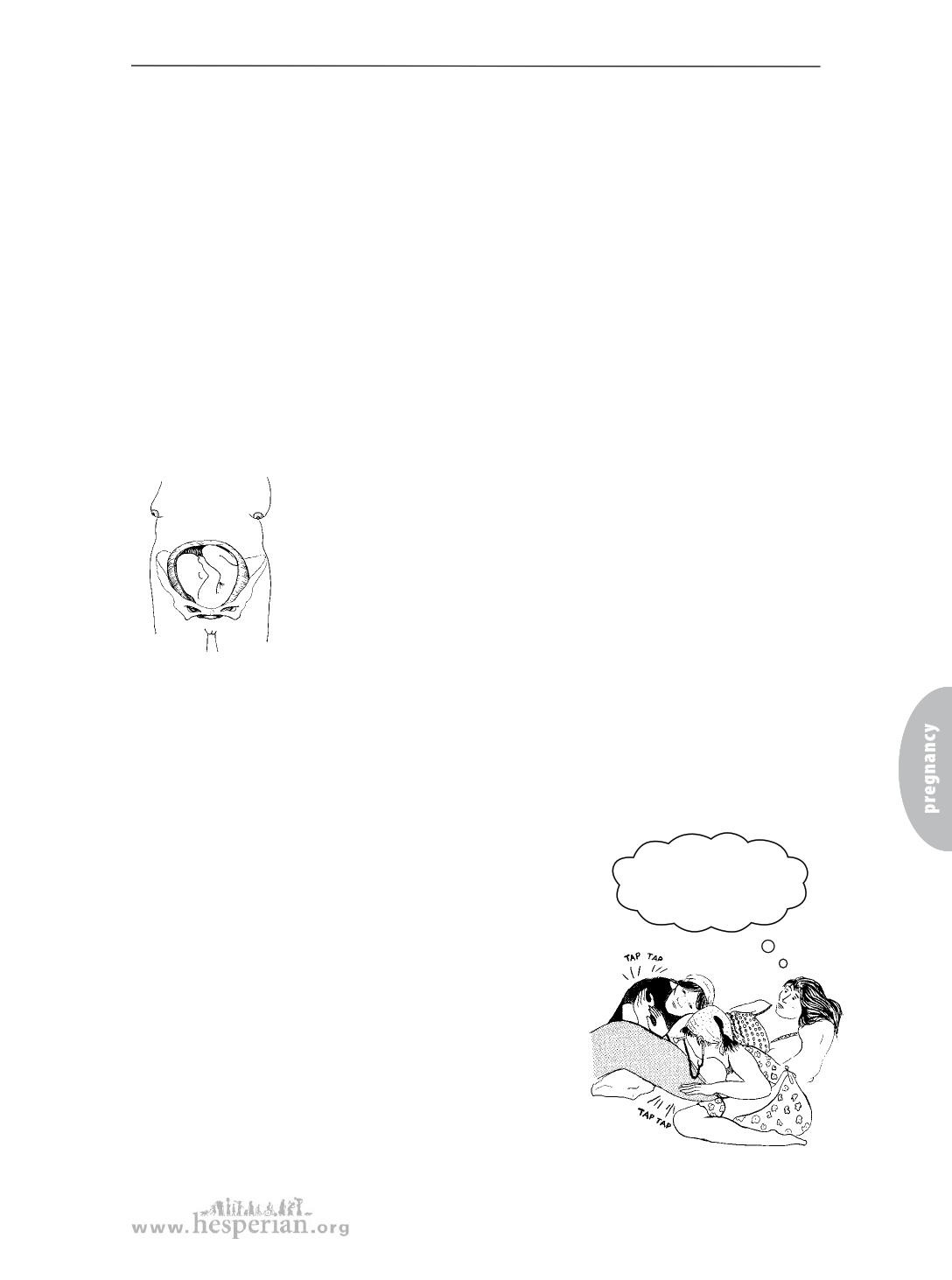
Check the baby
If a breech baby is going to be born at home, it is important for a very skilled
midwife to be there (see page 215 for how to deliver a breech baby).
Remember, there are some times when breech birth is even more dangerous.
Do not try to deliver a breech at home if:
• this is the mother’s first baby.
• the mother has had long or difficult births in the past.
• the baby is big.
• the mother is weak or has been ill, so she cannot push well.
• the midwife is not very skilled or experienced with breech births.
Baby is sideways
If the baby is sideways — not head down or head up — by 8 months, you can try
lifting the mother’s hips. If the baby does not turn, you should make arrangements
for a hospital birth by cesarean surgery.
Sideways babies cannot fit through the mother’s pelvis
to be born. If you try to deliver the baby without surgery,
the mother’s womb will break during labor, and she and the
baby will die without medical care.
This baby must be
born by cesarean.
If the baby turns head down at any time — even on the
day the mother goes into labor — it is OK for the mother to
give birth at home. But remember that turning a sideways
baby by hand is just as dangerous as trying to turn a
breech baby. (See page 369.)
Twins
It can be very difficult to know for sure that a mother is pregnant with twins.
Signs of twins:
• The womb grows faster or larger than normal.
• You can feel 2 heads or 2 bottoms when you
feel the mother’s belly.
• You can hear 2 heartbeats. This is not easy, but it
may be possible in the last few months.
Their tapping is
different. I may have
twins!
Here are 2 ways to try to hear the heartbeats of twins:
1. Find the heartbeat of 1 baby. Have a helper listen
for other places where the heartbeat is easy to
hear. If she hears a heartbeat, have her listen
to one place while you listen to the other.
Each of you can tap the rhythm of the heartbeat
with your hand. If the rhythms are the same, you
may be listening to the same baby. If the rhythms are
not exactly the same, you may be hearing 2 different babies.
A Book for Midwives (2010)
143